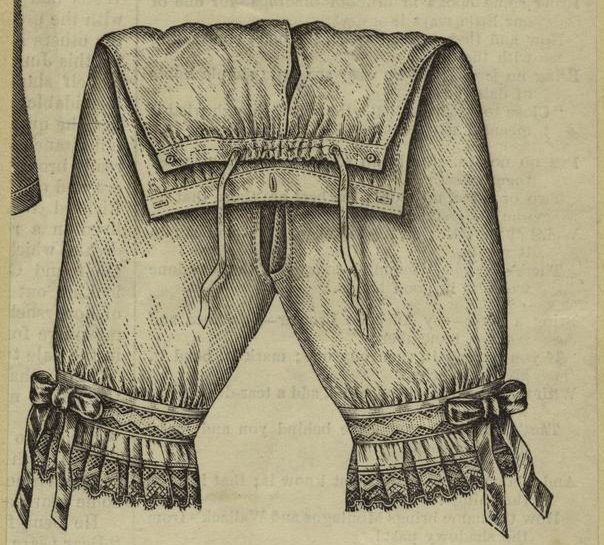
©Trustees of the British Museum
While I was looking for more information about a photo of a somewhat obscene silver platter dated 1732 that popped up while I was doing research (as we do), I came across an article titled “Masturbation Clubs of the 1700s.” In it, I read about the fascinating proceedings of the Scottish Club, The Beggar’s Benison. I also couldn’t stop thinking about something else. Let me get this out of the way right now.
The first rule of Masturbation Club is there is no Masturbation Club.
I couldn’t resist.
You might be thinking to yourself, “Isn’t masturbation like a solo thing?” “Why would you join a club?” Or you might be thinking, Masturbation club? Where have you been all my life?” Either way, group masturbation happens today with Jack/Jill off clubs and group masturbation parties. Check your local listings. What I was surprised to find out is that gentlemen’s clubs focusing on sexuality were all the rage in early 18th century UK. They’ve gone in and out of fashion over the past couple of centuries.
I know, I really shouldn’t be surprised but I was.
I’m not even sure how I came across the photo of the large plate engraved with words, most noticeably “the way of a man with a maid” and “test platter.” Oh and the vulva framing an erect penis and testicles with a little charm hanging from the shaft. The little charm is most likely a sporran or purse but it looks rather odd where it’s placed on the erect phallus. Along the outside rim are etched the words “The Beggar’s Benison Anstruther 1732.” All of this just screamed, “Must google this!” and sent me down a rabbit hole into the libertine adventures of 18th century London and Scotland. I found out that Beggar’s Benison was not really a masturbation club it was more. I also found there were other clubs and lots of lascivious behavior in these “gentlemen’s” clubs. Many clubs with various themes sprung up in 18th century London.
The 1700s saw a change in attitude about sex that had been evolving over time. It was not the change you would think. While sex for pleasure has always been around, attitudes towards it often changed with the times and with social standing. It seems before the age of enlightenment, the middle ages were all about sex for procreation but mostly for the lower classes. The nobility still had to marry and reproduce but often looked for sexual pleasure away from the marriage bed. Sexual promiscuity really depended on wealth, class, and whether you can get away with it. The nobility had been sleeping around for centuries already and prostitution never went away even when Henry the VIII tried to close the brothels to keep fast spreading STDs at bay. Syphilis and gonorrhea were rampant at the time, having spread through Europe like wildfire. This didn’t deter the sexually adventurous, unfortunately, and problems with these diseases continued into the next century.
By the 1700s, it seems that men that possessed wealth and power managed to find new and more exciting ways to party. Reconstruction of the monarchy after 1660 found a society ready to throw away the shackles of puritanism. There is a growth in men’s clubs providing a place for men to act and speak more freely. Open talk about sex and sexuality became popular at some of these clubs. At the same time, prostitutes and brothel madams could hold a celebrity like status. Their published diaries were as sought after then as leaked sex tapes and kiss and tell biographies are today. The libertine lifestyle was all the rage of the day even though people like Tissot were working hard to prove that masturbation was a ruinous hobby that would lead to debilitating illness. Heading towards the 19th century one part of society was trying to develop anti-masturbation technology while the other was putting their penis on a plate and ejaculating into it.
The full name of the club was Most Ancient and Puissant order of the Beggar’s Benison and Merryland. It was founded in 1732 in Anstruther, Scotland. Benison means blessing and Merryland is a euphemism for a woman’s body. Kind of like a sexy amusement park. The name comes from the club’s origin myth that King James, dressed as a commoner, received a blessing from the maid who carried him over a stream. What I find intriguing about The Beggar’s Benison is that the stories may have been exaggerated and even the written documentation may not show the whole truth. Artifacts and records were saved and are currently held in a collection at the University of St Andrews in Fife, Scotland. David Stephenson, the author of the book The Beggar’s Benison, looked over the records and finds that some dates don’t match up and they are not written in the proper minutes form, something that rarely if ever happens at the time. It’s speculated that some of these records were either written by someone who wanted to make the club out to be more obscene than it actually was, either to make it seem more interesting or more grotesque. It’s possible the sexual activity was only during the 1730s.
The Testing Platter was used to welcome in new initiates. Surviving documents state that the initiate would enter nude after being prepared in a closet. The initiate approached a table or altar in the center of the room where the Testing Platter awaited. It was apparently necessary to have an erection. Said erection would be placed on the platter with a white cloth placed over it. Then the officers and knights would join the initiate, also placing their erections under the white cloth so that they all touched. Wine was drunk; a passage from Song of Solomon was read, and often a piece of erotica. The documents state usually that “all frigged” which I’m taking to mean they all ejaculated onto the plate. Huzzah for gentlemanly brotherhood. None of this seems to have been thought of as homoerotic, merely celebrating the virility of manhood and sexuality. There are phallic drinking glasses, medals with erotic figures on the back, and some seals with similar imagery.
When not welcoming initiates, they read erotica and had rather serious lectures about sex. They hired “posture girls” to disrobe and pose so as to get a closer look at the most intimate parts of her body. No touching, no talking, just looking. Documents don’t tell us if this continued during the entire time the club was meeting. They only met about once or twice a year and seem to fall out of favor towards the end of the 18th century. It folded in 1836, just in time for the Victorian era to begin and a century of sexual repression. In it’s time, this band of sexual merry makers, or as Samuel Johnson defined them in his dictionary “An assembly of good fellows meeting under certain circumstances,” spread to Edinburgh, Manchester England, and possibly even St Petersburg. They would also spawn a spin-off group called the Wig Club. Someone would try to resurrect it in the early 1920s but to no avail. At least they left some very interesting collectibles and some scandalous stories behind.
I’ll leave you with the blessing placed upon King James and used among the Benison members (heh, I said members). “May prick, nor purse, never fail you.”



![V0047298 Various sex aids, including dildos, artificial vulva, penis Credit: Wellcome Library, London. Wellcome Images images@wellcome.ac.uk http://wellcomeimages.org Various sex aids, including dildos, artificial vulva, penis supports etc. Colour woodcut, ca. 1830. Published: [ca. 1830] Copyrighted work available under Creative Commons Attribution only licence CC BY 4.0 http://creativecommons.org/licenses/by/4.0/](http://www.sexualhistorytour.com/wp-content/uploads/2016/04/Various_sex_aids_including_dildos_artificial_vulva_penis_Wellcome_V0047298-1024x852.jpg)

